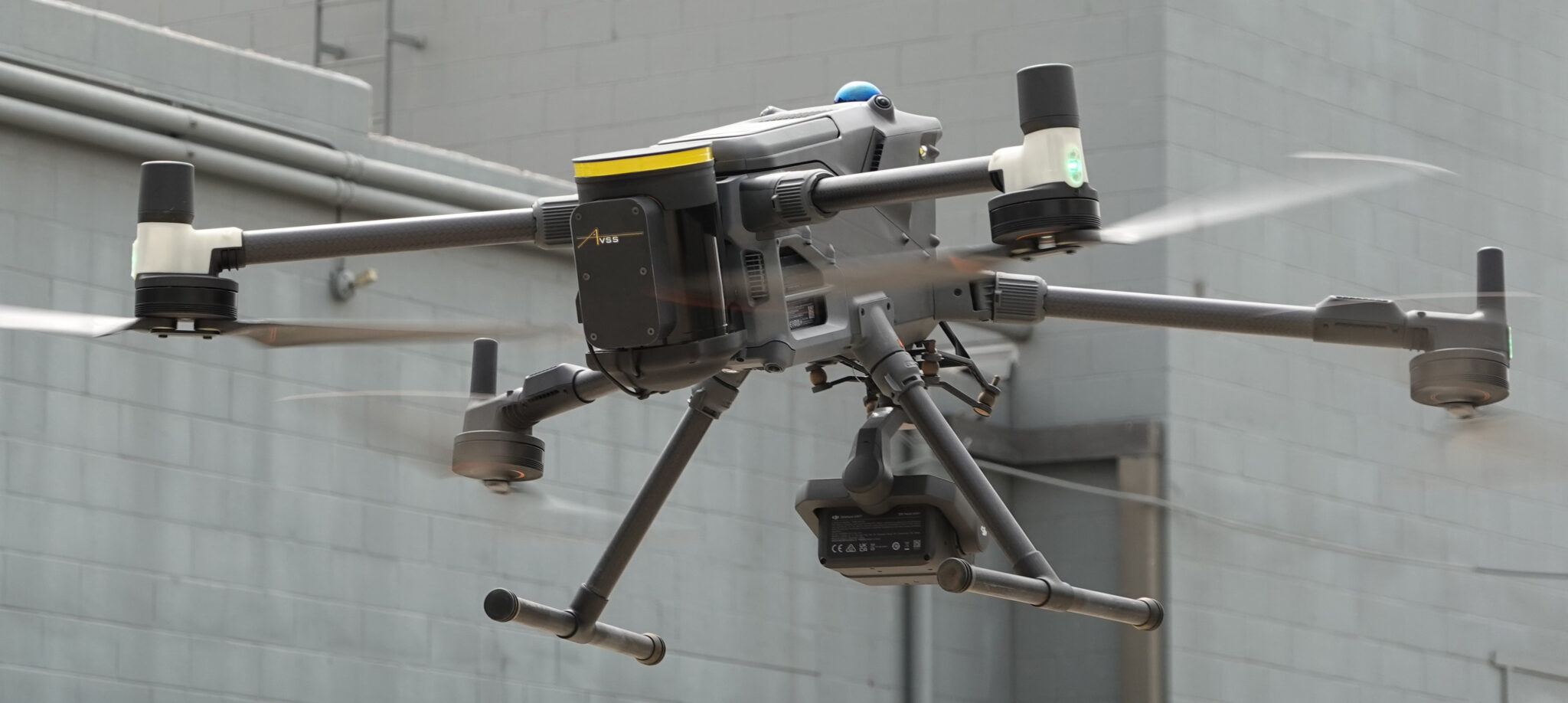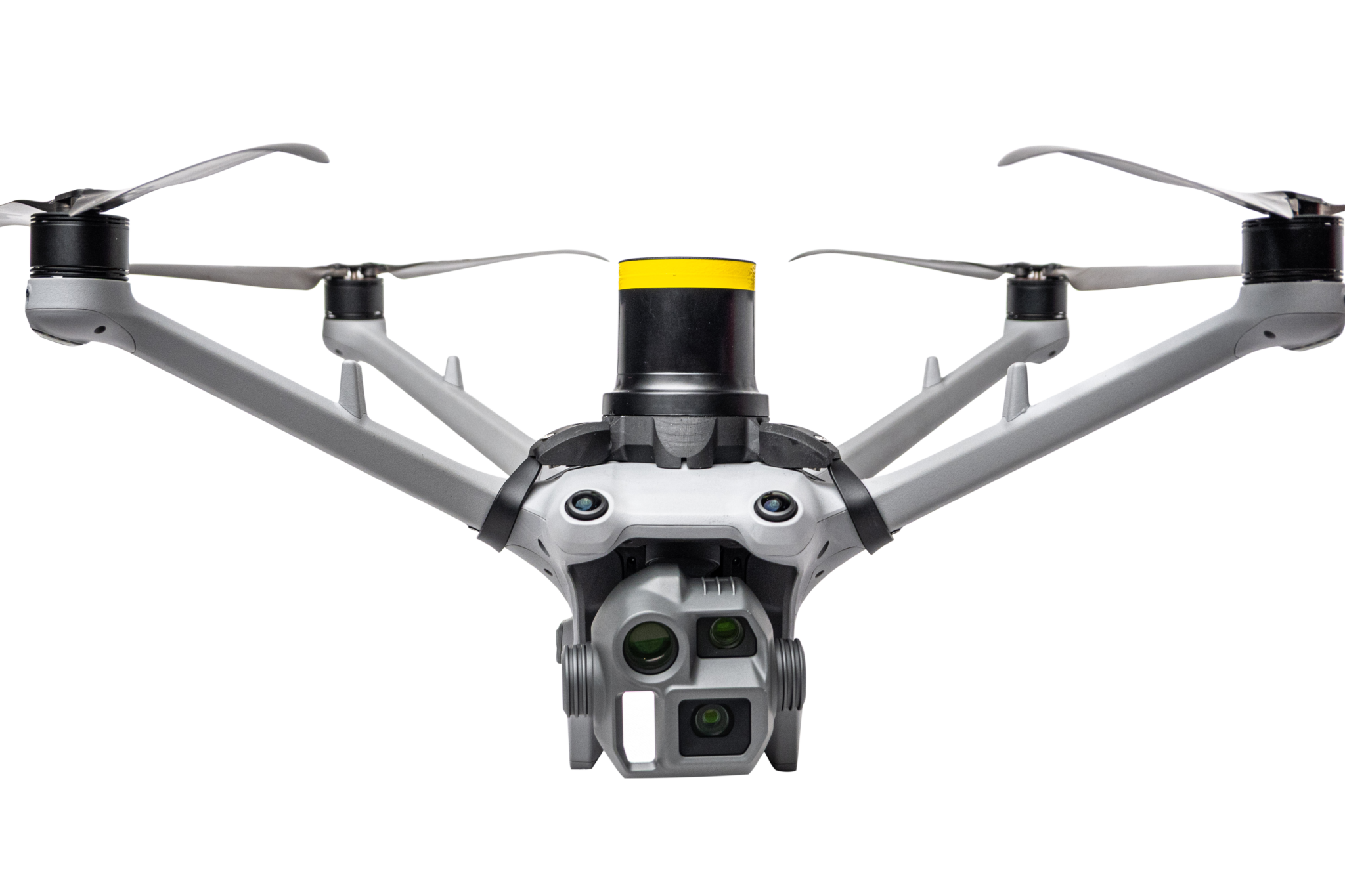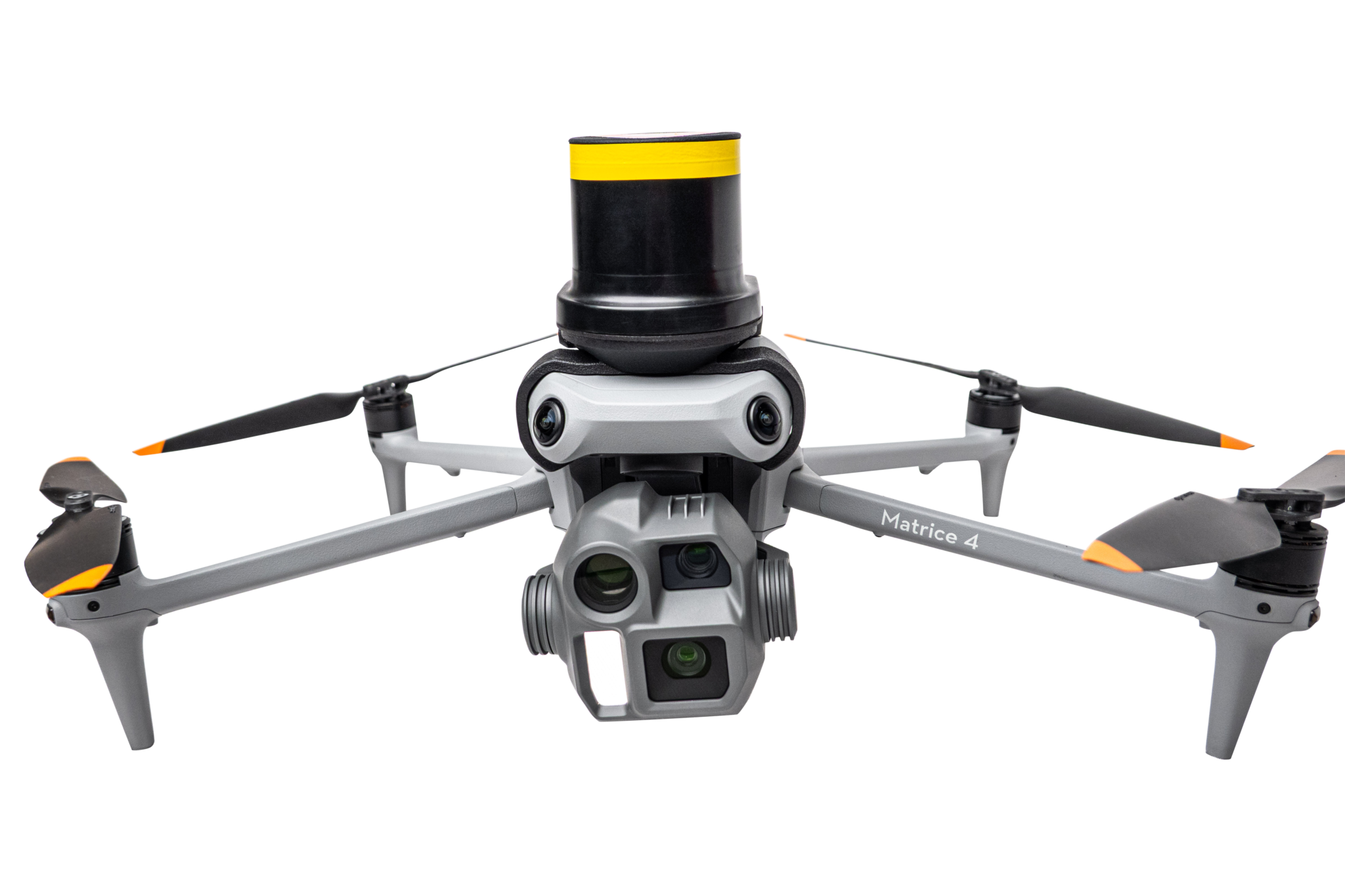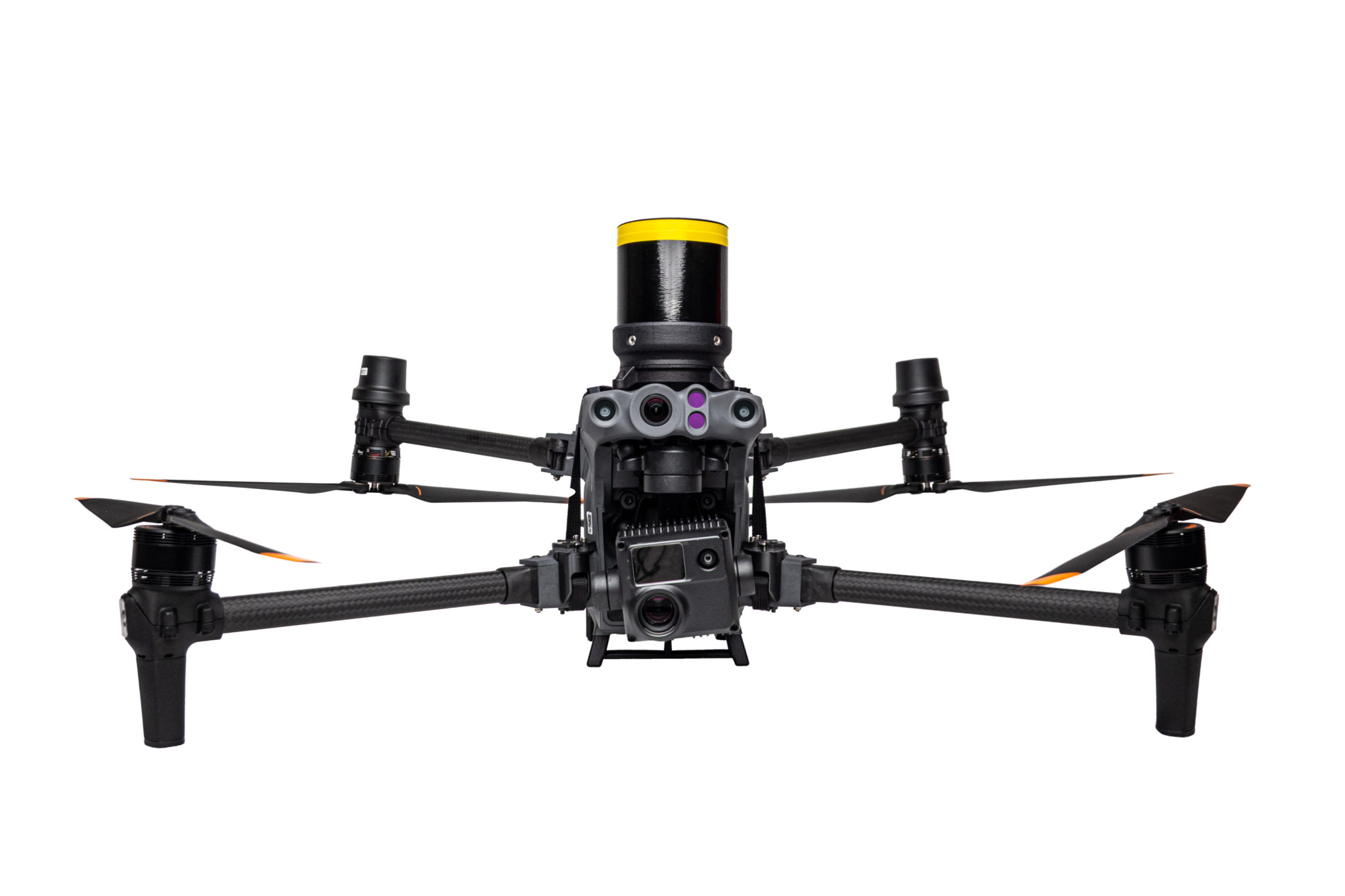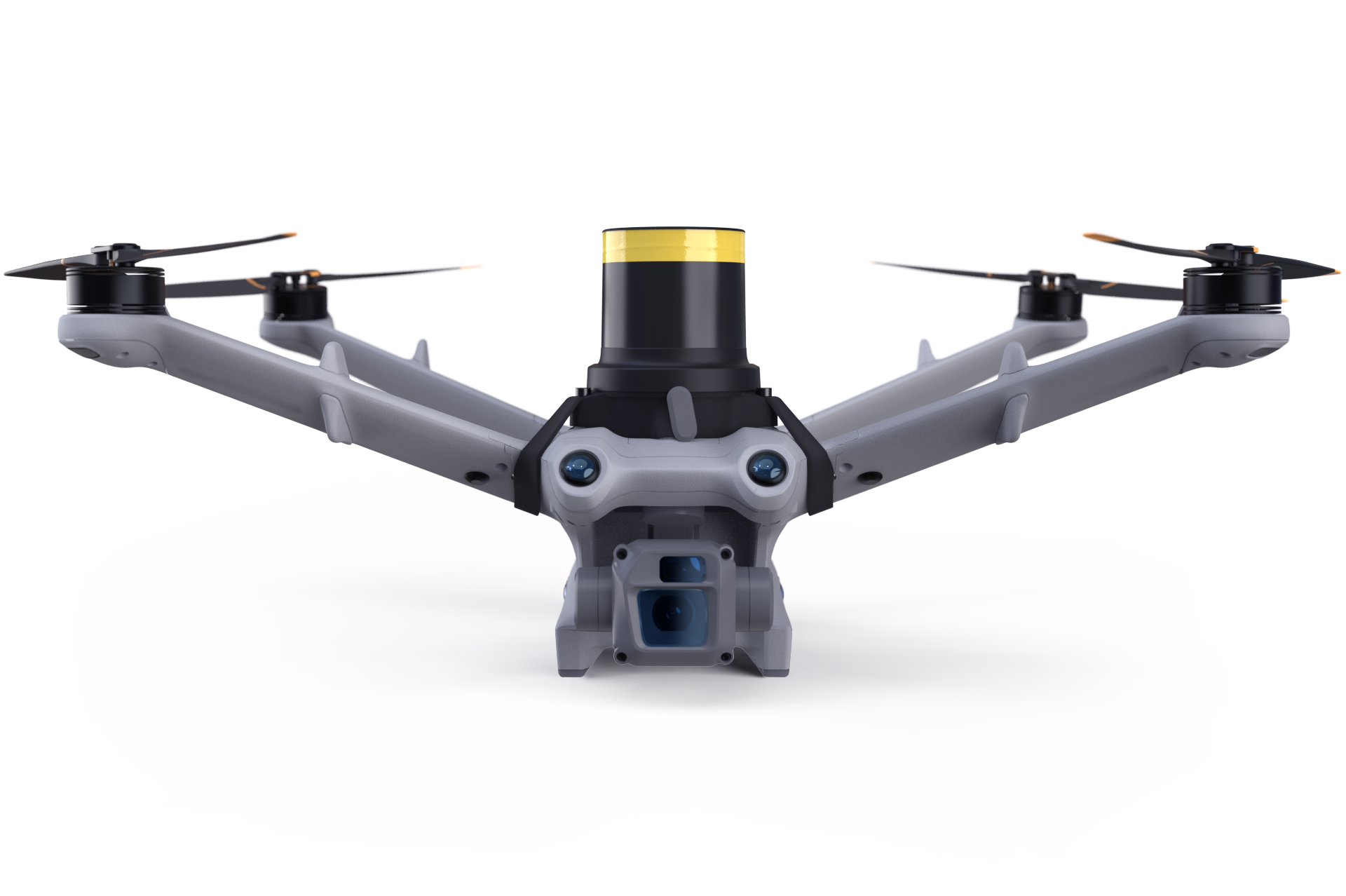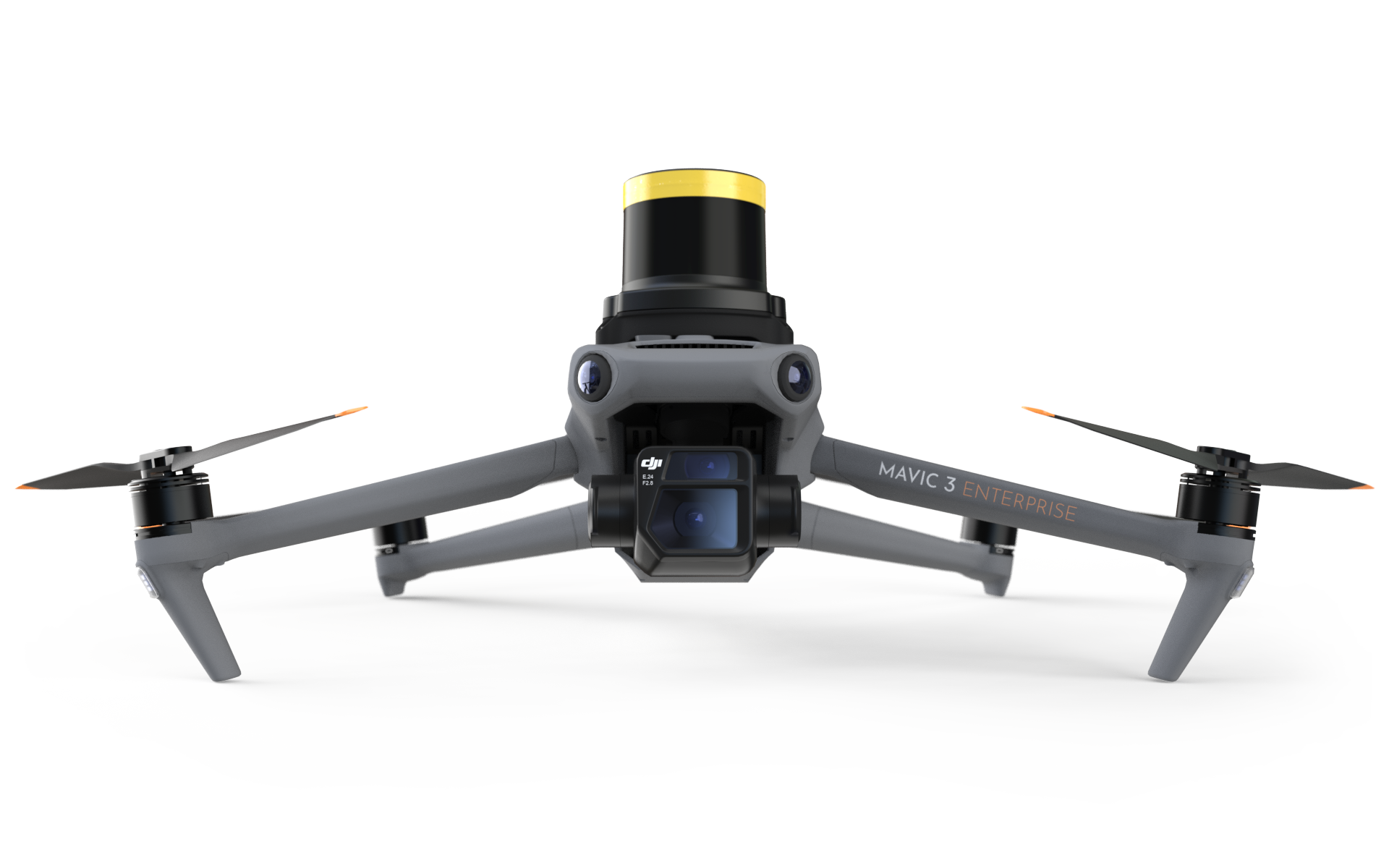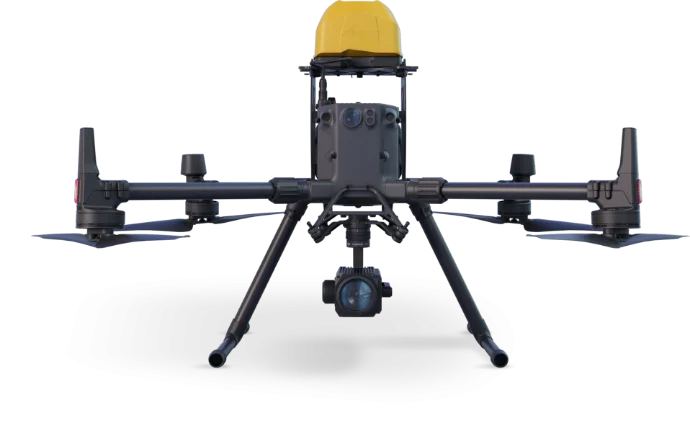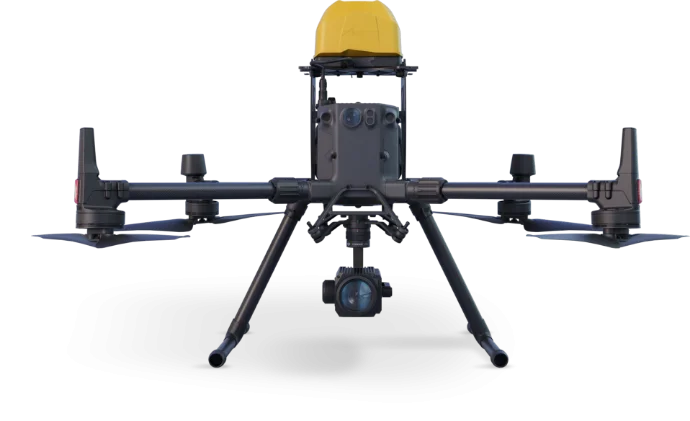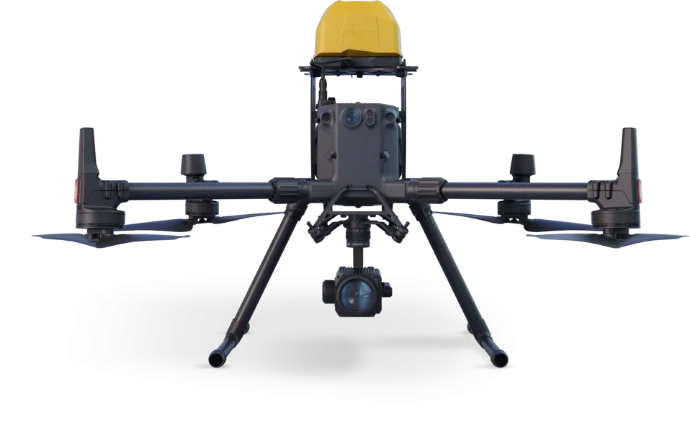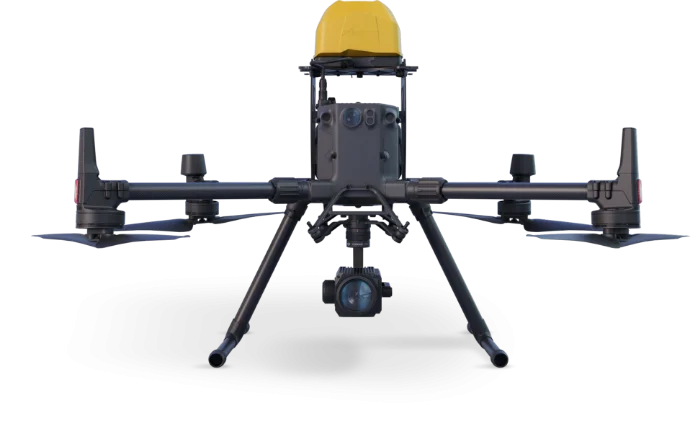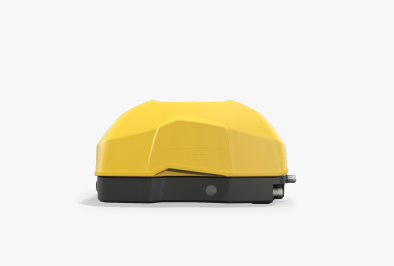
Yes, your LinkedIn, Facebook, and Instagram feeds are filled with early, perhaps AI-generated, summaries and quick shares of the Fact Sheet from the Federal Aviation Administration Proposed Part 108 Rule to enable “routine and scalable BVLOS operations in the NAS”.
This article, besides the cover image of Uncle Sam, is not an AI-generated summary nor an attempt to capture all of the details in the 731-page proposed rule.
This article is a human-written summary of 25 requests for comments that the FAA has sprinkled throughout the proposed rule, with a few lines of opinions and insight from the author.
What in the Part 108 is an NPRM
For those who are not familiar with the FAA’s rule process, an NPRM, a Notice of Proposed Rulemaking, is a critical step to introducing new rules. In this case, rules specific to the routine BVLOS flights of drones.
For 60 days after publication in the Federal Register, the public can submit comments to the FAA about the proposed rule. So, if you like the rules, let them know. If you don’t like the rules, let them know. This public engagement is required per the Administrative Procedure Act (APA). As stated by the Department of Transportation:
The Administrative Procedure Act (APA) requires agencies to publish in the Federal Register a general notice of proposed rulemaking which needs to include: 1) a statement of the time, place, and nature of public rulemaking proceedings; 2) reference to the legal authority under which the rule is proposed; 3) either the terms or substance of the proposed rule or a description of the subjects and issues involved; and 4) the Internet address of a summary of not more than 100 words in length of the proposed rule, in plain language, that must be posted on https://www.regulations.gov). After general notice is provided, the agency must give interested persons an opportunity to participate in the rulemaking through submission of written data, views, or arguments with or without opportunity for oral presentation. After consideration of the relevant matter presented by the interested parties, the agency must incorporate in the final rule adopted a concise general statement of the rule’s basis and purpose.
If you are looking for more information about the NPRM process, check out this summary video by Pilot Institute: https://www.youtube.com/watch?v=Pa6e6-CT5B0
What Comments Do They Want:
Generally, they want to know if they are aligned with industry expectations and market realities. They want to hear from stakeholders who may be impacted by the proposed BVLOS rules.
For example, in the final Part 107 Operations Over People rule, you can see where the FAA had acknowledged a shortcoming in their initial proposed rule and stated “the FAA received comments in response to the NPRM that criticized the Agency for insufficiently considering the reliability of the unmanned aircraft in determining whether a small unmanned aircraft could be operated safely over people. The FAA also received comments stating that if small unmanned aircraft were issued an airworthiness certificate, that certification should be sufficient to permit the small unmanned aircraft to operate over people. The FAA agrees that demonstrable reliability of the small unmanned aircraft is an alternative path for operations over people. Therefore, this final rule includes a fourth category to allow small unmanned aircraft issued an airworthiness certificate under part 217 to operate over people in accordance with part 107, so long as the operating limitations specified in the approved Flight Manual or as otherwise specified by the Administrator, do not prohibit operations over human beings” (p. 13).

25 Requests for Comments:
Specific to the proposed Part 108 rules, one can see that they have requested comments from the public on numerous concepts, ideas, methods, and more. In this section, 25 requests for comments are provided with some opinions and insight. It is important to note that this list does not include all requests for feedback/comments, and it should not derail you from providing your comments if they are outside of this summarized list.
#1 Hazards to Users of the NAS or the Public – Page 20
On Page 20, the FAA discusses potential hazards of BVLOS operations. They state that they are “twofold: the collision risk posed to other users of the NAS and the risk of collision debris or a faulty UAS posed to persons and property on the ground”.
For comments, the FAA is inviting feedback on whether the proposed rule would create a hazard to the NAS or the Public.
#2 & #3 Certificate Requirements – Page 21
For this comment request, the FAA is attempting to determine if the proposed rule poses a safety risk that could be mitigated by requiring airworthiness certification or airman certification. The request for comment stems from their risk analysis that Part 108 falls between Part 107 and the Special Airworthiness Certification requirements.
The FAA would like to know if they are correct in their risk assessment, which initially determined there is no need for airworthiness certification or an airman certification.
#4 Definitions (§ 108.5) – Page 52
The FAA has proposed the introduction of 17 definitions “that are unique to operations conducted under proposed part 108” (p. 52). These 17 new definitions include:
- Associated Elements: Elements not directly affixed to an unmanned aircraft but necessary to interact with it for safe flight during all normal, abnormal, or emergency operations.
- Command and Control Link: The data link that connects the unmanned aircraft and the ground control station to manage the flight.
- Conformance Monitoring: The real-time ability to determine if an unmanned aircraft is flying in accordance with its operational intent, and to share situational awareness data with relevant airspace users during off-nominal or contingent situations.
- Detect and Avoid: The ability of an unmanned aircraft system to see, sense, or detect aircraft or hazards and make a flight adjustment to avoid a collision.
- Flight Coordinator: An individual who monitors an unmanned aircraft system under this part and can control, initiate emergency actions, or issue commands to the aircraft during flight.
- Ground Control Station: The associated element that communicates with and controls the unmanned aircraft.
- Hazardous Material: As defined in 49 U.S.C. 5102(2) and 49 CFR 171.8.
- Life-limited Part: Any part with a mandatory replacement limit specified by the manufacturer and documented in maintenance instructions.
- Operational Intent: A volume-based representation of airspace showing the intended flight path for an unmanned aircraft, composed of overlapping or contiguous 3D volumes with defined start and end times.
- Operations Personnel: A person performing a safety function employed by, or used by, an operator under this part.
- Operator: A person conducting operations under this part.
- Package Delivery: Delivery of goods, materials, or supplies from a business/commercial location to a residential or business end user.
- Safe Distance: The minimum distance needed to avoid a collision hazard with another aircraft.
- Strategic Deconfliction: Use of interoperable strategic conflict detection and resolution tools to mitigate collision risk between unmanned aircraft.
- Strategic Conflict Detection: Identifying overlapping operational intents among unmanned aircraft.
- Strategic Conflict Resolution: Resolving overlapping operational intents among unmanned aircraft.
- Target Average Conformance: Monitoring an operator’s ability to fly in accordance with operational intents over a defined period.
So, this is your chance to provide comments on whether these new definitions would be helpful for the public, if there are definitions that are not needed, or if there are definitions that should be included.
#5 & #6 Applicability (§ 108.1) – Page 55
The FAA would like to know if there is a need or desire to “expand part 107 for VLOS UAS operations weighing 55 pounds on greater” (p. 57). As part 108 would allow for heavier drones to fly, they seem unsure of whether part 107 pilots would benefit from a regulatory pathway to the increase in maximum take-off weight. The FAA has seemed to have approached this issue with the perspective that good is better than great, as “doing so could unnecessarily delay this proposed rule” (p. 57). Furthermore, the FAA is seeking feedback on whether part 91 pilots with exemptions would also benefit from a regulatory pathway.
So, for those who are flying VLOS for agriculture or just need a few more pounds to get those sensors on board, this is your chance to suggest an update in weight classification.
#7 & #8 Reporting (§ 108.45) – Page 73
The FAA intends to increase the reporting requirements for part 108. They intend to “capture a diverse set of data ensuring that FAA can appropriately track and monitor the safety of UAS operations under this part.” (p. 73)
The FAA wants to know if this requirement is over-the-top and “invites comments on the impact this might have on operators, including potentially less-burdensome alternatives.” (p. 79)
Furthermore, the FAA wants to know if it should require traffic target reporting. If so, “what type of general time latency would be appropriate” (p. 81).
#9 Registration (§ 108.115) – Page 85
Like part 107, the FAA wants all drones registered. However, they are suggesting to amend part 47 so that “any UAS operating under part 108 would be required to register under part 47” (p. 87). So, the FAA wants to read comments on a potential registration process tailored to UAS operations.
#10 General Operating Rules (§ 108.120) – Page 88
The proposed part 108 rules would require that the UA be monitored and controlled from a location that is physically within the United States, “including its territories and inter-island operations when operating in the United States airspace.” (p. 92)
But the FAA does want to know whether this requirement should be adapted to allow for monitoring or control outside of the USA. So, if you are content with flying from Guam, Hawaii, and other sunny spots, I assume you’ll be good with this requirement. However, if you want to outsource to other countries or have the flexibility to run your mission on vacation, this is your chance to let them know.
#11 Preflight Requirements (§ 108.170) – Page 96
The FAA wants to know if its proposed requirement to identify ground obstacles and hazards associated with the flight plan is too much work. The FAA believes that advances in GIS, 3D mapping software, and general publications should make this requirement easy to comply with.
#12 Operation in Controlled Airspace (§ 108.180) – Page 107
The FAA wants to allow part 108 in certain areas within controlled airspace at or below 400 feet AGL “when participating in strategic deconfliction and conformance monitoring.” (p. 107)
To mitigate potential risk, the FAA has suggested, for example, that UA operating in Class B or C airspace have a DAA system. Ultimately, the FAA is seeking comments on whether the proposed mitigation measures described in the NPRM will address the risk of collision with crewed operations and “any information that provides more insight into if, and to what extent, operations with ADS-B Out turned off happen in controlled airspace below 500 feet.” (p. 110)
#13 Operations Over People (§ 108.185) – Page 114
Parachutes. Parachutes. Parachutes. Oh, wait, no direct mention of parachutes other than for delivery… But, if you know anything about performance-based standards, Reliability, Industry Consensus Standards, Tactical Mitigations, Fail-Safe Mechanisms, and Hazardous Outcomes all live within the family of why parachutes exist. Furthermore, stuff happens, like bird strikes and cranes.
Nevertheless, for part 108 operations over people, the FAA outlines 5 categories to manage the risk based on somewhat static population density numbers:
- Category 1: Farther than 1 statute mile from any cell of 10 people or higher.
- Category 2: Within 1 statute mile of a cell of 10 people or higher, and not within a Category 3, 4, or 5 area.
- Category 3: Within 1 statute mile of a cell of 25 people or higher, and not within a Category 4 or 5 area.
- Category 4: Within 0.5 statute miles of a cell of 100 people or higher, and not within a Category 5 area.
- Category 5: Within 0.5 statute miles of a cell of 2,500 people or higher.
How would they determine the relevant population density within these categories? Well, the FAA is suggesting using the free LandScan tool by Oak Ridge National Laboratory and augmenting it with some other data sets. They are also considering publishing a map, similar to UAS Facility Map for LAANC data, to help the operators determine population density categories.
So, the FAA would like to know whether using this type of tool would be helpful or desirable.
Special Note: for those looking to fly BVLOS over open-air assemblies, which an FAA legal interpretation has concluded that “a picnic area, if it is sufficiently populated, could be an open-air assembly of persons, as could a beach” (p. 123), is not allowed.
#14 Category 5 Operations – Over People – Page 122
A category 5 operation will have the highest population density and is deemed the highest risk on the safety continuum. For this type of operation, the FAA would require a DAA system that meets the requirements in proposed 108.825 and 108.195, plus can detect and avoid aircraft that are not broadcasting their position; ultimately, requiring a DAA that can detect all airborne traffic.
This requirement stems from “the high volume of persons on the ground in an area designated as Category 5, the potential for persons to be impacted by fallen debris or large pieces of aircraft would be greater should an airborne collision occur. By requiring a DAA system capable of detecting all aircraft, the risk of collision would greatly be reduced, which also further reduces the likelihood of hazards to persons on the ground.” (p. 122)
With the risks and technical mitigations considered, the FAA would like comments and “information that provides more insight into if, and to what extent, ADS-B Out off operations happen in dense urban areas below 500 feet.” (p. 123)
#15 Use of Strategic Deconfliction and Conformance Monitoring – Alternatives Considered (§ 108.190) – Page 124
The FAA is concerned about air-to-air collisions. They are assessing technologies, processes, and methods to reduce this risk. In this specific section of the NPRM, they are seeking comments on whether “the UAS-to-UAS collision risk is appropriate for the nature of proposed operations when the operator is using strategic deconfliction or conformance monitoring through a part 146 certificated entity.” (p. 134)
#16 Operations Near Aircraft: Low Altitudes Right-of-Way Rules (§ 108.195) – Page 134
The FAA’s system for right-of-way is based on crewed aircraft or VLOS operations and under the principle of “see-and-avoid”. With part 108, they are proposing that the UA “would be required to yield to all manned aircraft broadcasting their position using ADS-B or electronic conspicuity equipment, and those operating in specific locations” (p. 135)
After considering the potential for mandating ADS-B Out for all operations below 500 feet for crewed operators and assessing the technological landscape, the FAA has decided that it wants future flexibility, as a technological solution may appear soon.
Therefore, they are seeking comments on whether they “should consider an added equipage requirement in the final rule for UA in the event that such a technological solution could be delivered before the rule is implemented.” (p. 138)
#17 Remote Identification of Unmanned Aircraft – Page 141
As always, a loaded question for drone operators in the USA. However, operators will be happy to hear that they are not stating the requirement for a network-based RID. Nevertheless, they do want a “status message that indicates whether the UA is being operated BVLOS, a status which indicates that the unmanned aircraft is being operated without a flight coordinator in accordance with 108.310, if applicable, and the takeoff location of the unmanned aircraft.” (p. 141)
With this section, the FAA is seeking comments to determine if this broadcast operational status message requirement should be incorporated into part 107.
#18 Operation in Shielded Areas – Page 143
During part 108 flights, the FAA has proposed that the UA have the right-of-way while conducting operations in the shielded areas. This would define shielded areas within 50 feet of certain infrastructure, such as power lines, railroads, and bridges.
While the FAA has this initial list of infrastructure sites, they are seeking input on additional strictures that could be included.
#19 Operations of Multiple Unmanned Aircraft – Page 146
The FAA is aware that part 108 should allow operators to operate more than 1 UA at a time, such as a drone delivery operator overseeing 5 delivery flights. To determine the 1:X ratio, the FAA is suggesting relying on industry consensus standards (e.g., ASTM International).
For comments, the FAA would like to hear “how 1:many operations could be safely standardized and expanded in the regulations beyond 1:1” (p. 148)
#20 Flight Coordinator – Page 171
Under the proposed rules, the FAA is suggesting the introduction of a “flight operations supervisor who would act on behalf of the company and be responsible for the overall safety and security of the operation, including ensuring that operations are conducted within the parameters of the applicable requirements and that personnel are appropriately trained for their role.” (p. 46)
Within the purview of the flight operations supervisor is the flight coordinator. The flight coordinator “would have more direct involvement in the operation of a UA and would similarly require training in safe operation.” (p. 46)
The FAA is seeking comments on whether the requirement of 5 hours of certain competency and recency requirements within the last 12 calendar months on the specific UA would be sufficient to operate under part 108.
#21 Permitted and Certificated Operations (Subparts D and E) – Page 206
The FAA has proposed that UAS operators will require an FAA-issued operating permit or operating certificate to operate BVLOS operations. The two categories are delineated by risk: permitted, the lower risk, and certificated operations. Within these categories, limitations would include the maximum take-off weight of the UA.
With three categories of maximum take-off weights (55 pounds, 110 pounds, and 1,320 pounds) and the two categories of permitted and certificated operations, the FAA would like feedback on the general approach and would like, “with supporting data as available, on allowing operations with aircraft between 110 pounds and 1,320 pounds at higher population densities than proposed in this preamble.” (p. 209)
#22 Package Delivery Operations – Page 238
The FAA recognizes that the delivery of hazardous material is a viable use case for part 108. Per the Code of Federal Regulations, hazardous materials are “substance or material that the Secretary of Transportation has determined is capable of posing an unreasonable risk to health, safety, and property when transported in commerce, and has designated as hazardous under Sec. 5103 of Federal hazardous materials transportation law (49 U.S.C. 5103).”
With part 108, the FAA would like to receive comments on “FAA requests comment on whether and how a permitted operator seeking to transport hazardous materials may be appropriate. FAA is particularly interested in the limited scenarios when operators would seek relief to transport hazardous materials (e.g., in support of a disaster response) and what types of conditions and limitations the operators believe would sufficiently ensure an acceptable level of safety.” (p. 238)
AVSS’s Drop System for Snowdarts. Integratd on FlyCart30. Photo Credit: AVSS.

#23 Eligibility for Airworthiness Acceptance – Page 336
To meet the requirements of part 108, the FAA has proposed certain eligibility requirements for manufacturers who wish to obtain airworthiness acceptance. Under the proposed rule, the FAA states “that for the manufacturer to be eligible to apply for a UAS airworthiness acceptance, the UAS must be manufactured in the U.S., or be manufactured in a country with a Bilateral Airworthiness Agreement addressing UAS or a Bilateral Aviation Safety Agreement with associated Implementation Procedures for Airworthiness addressing UAS; or an equivalent airworthiness agreement.” (p. 336)
Part of the FAA’s rationale is that it would be difficult to travel to various countries to fulfil its oversight responsibilities. Therefore, the FAA is requesting comments on whether there should be any particular manufacturing restrictions on foreign manufacturers who wish to receive the airworthiness acceptance. Moreover, they are seeking feedback related to outsourced manufacturing by an American entity or a “U.S. manufacturer’s production of a UAS using foreign designs or parts from a covered country…[and] whether there should be any particular restrictions on the operation of foreign-manufactured UAS by private entities beyond those already provided in law.” (p. 337)
#24 Repairs and Alterations – Page 366
With any UAS, there comes a time when repairs are required. Furthermore, some use-cases are desired by an end-user that a readily available integrated solution does not exist on the platform (e.g., SnowDarts™ for proactive avalanche management with a UAS).
As the FAA believes the original manufacturer is uniquely positioned to assess repairs and alterations, the FAA is seeking comment and alternative suggestions on whether its proposed rule that dictates that the original equipment manufacturer is “the only qualified entity to confirm that conformance to subparts G and H remains intact.” (p. 366)™™™

#25 Cybersecurity (§ 108.875) – Page 393
A topic that does not always receive its due attention and can be glanced over by some commercial UAS stakeholders, cybersecurity has its place within the FAA’s proposed Part 108 rule.
For airworthiness approval, the FAA has proposed that “UAS equipment, systems, and networks, addressed separately and in relation to other systems, be protected from unauthorized electronic interactions.” (p. 393)
With their proposed cybersecurity protections for part 108, the FAA is requesting feedback on their suggestions to deviate from relying on voluntary consensus standards bodies and use other acceptable standards as a Means of Compliance for UAS approved for part 108.
In Summary:
The new proposed Part 108 rules by the FAA is a tremendous step toward the boring (i.e., “predictable and clear pathway for safe, routine, and scalable UAS operations that include package delivery, agriculture, aerial surveying, civic interest, operations training, demonstration, recreation, and flight testing”) use of drones in BVLOS operations.
Over the next 60 days, I strongly encourage you to review the proposed rules and provide comments to the FAA. If that means throwing the NPRM into ChatGPT, great.
If you are looking for additional sources/insights/opinions, I suggest checking out some of the following pages:
- Greg Reverdiau from the Pilot Institute
- Jonathan Rupprecht (Attorney and Flight Instructor) from Rupprecht Law, P.A.
- Lisa Ellman from the Commercial Drone Alliance
- Gary Mortimer from sUASNEWS
- Haye Kesteloo from DroneXL.co
- Dawn Zoldi from Autonomy Global
ABOUT AVSS
Founded in 2017, AVSS started developing compliant safety products for commercial drones. These safety products are used worldwide and can be purchased from more than 70 partners. In 2020, AVSS expanded its product offerings with guided and unguided delivery systems. The delivery systems enable critical resupply when landing a drone, helicopter, or small airplane is not an option. In 2025, AVSS announced their newest innovation, the Precision Avalanche Management System (PAMS), for the proactive management and mitigation of avalanches.
AVSS’s retrofit products (DJI M4S, DJI M4D and M4TD for Dock 3 and standalone, DJI M3D and M3TD for Dock 2, DJI M200, DJI M30, DJI MAVIC 3 ENTERPRISE, DJI M300 RTK, DJI M350 RTK) are distributed worldwide through their more than 70 authorized dealer network and sold directly to drone manufacturers across the world. AVSS also provides direct support to drone manufacturers and pilots who integrate the PRS product line for flight over people and BVLOS compliance.
